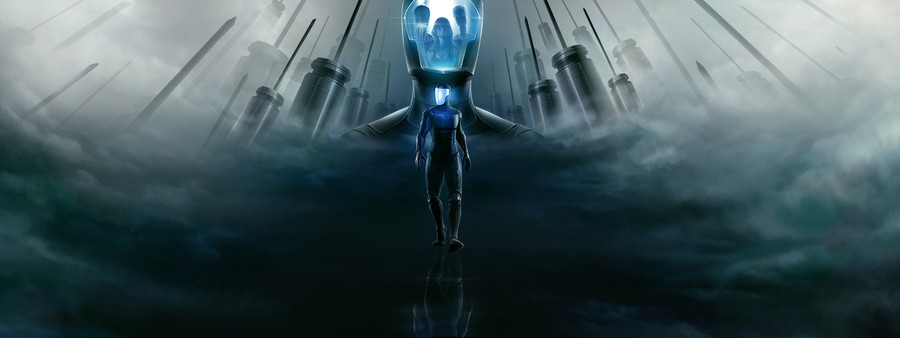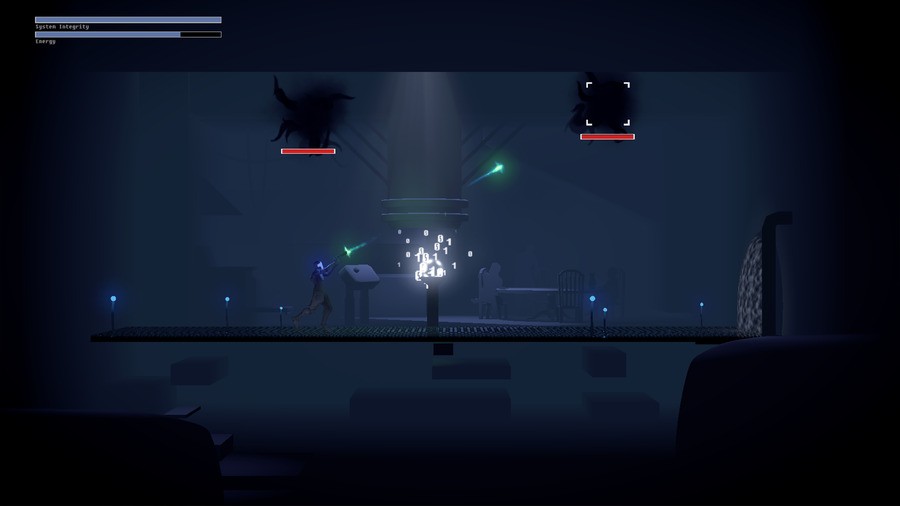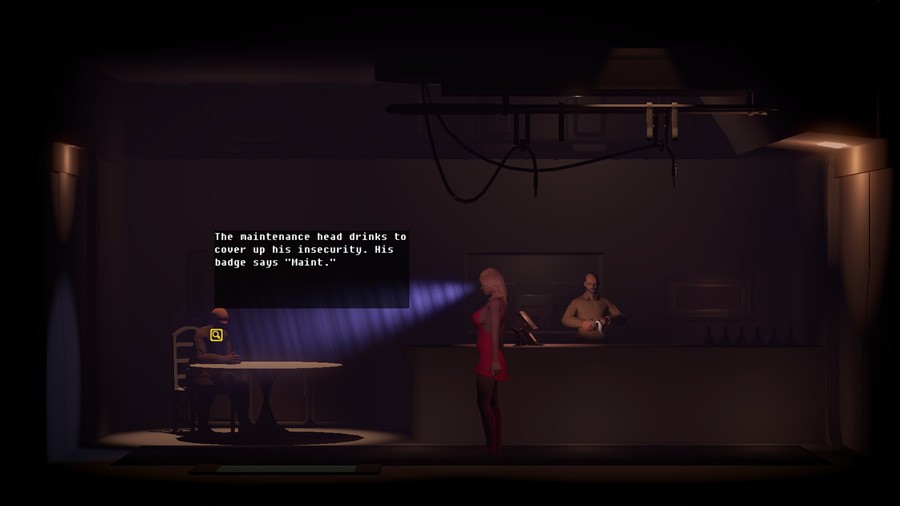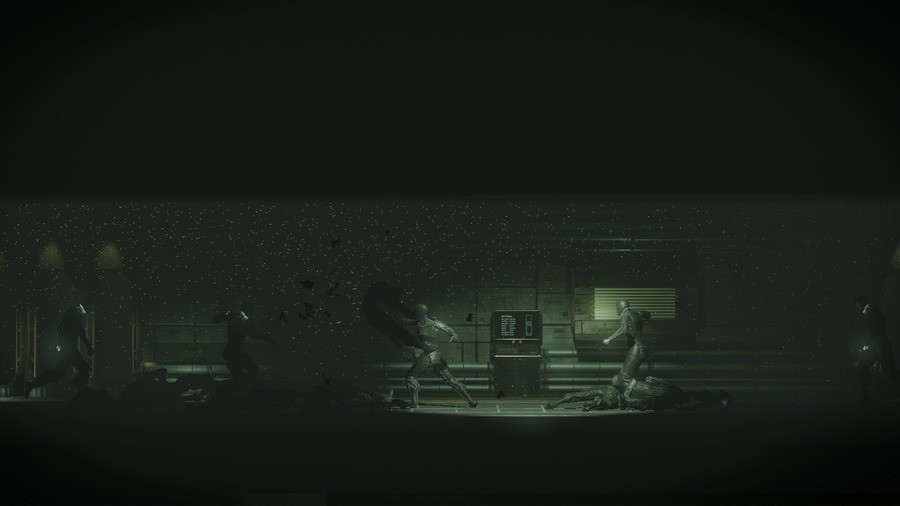As a follow up to the award-winning 2014 Wii U Sci-Fi adventure The Fall, developer Over The Moon took some time to talk to us about the upcoming sequel, bound for the Switch. With an interesting mix of exploration, puzzle solving and an absorbing psychological story, The Fall Part 2: Unbound is sure to grab attention when it launches next week.

Nintendo Life: Could you introduce yourself?
John Warner: Hi, I'm John Warner, the Creative Director at Over The Moon. I enjoy walks on the beach and engaging conversation by firelight. When I'm not doing either of those I can be found making video games in my apartment, with the help of my small but exceptionally fantastic team of contractor ninjas.
 Watch on YouTube
Watch on YouTubeSubscribe to Nintendo Life on YouTube841k
How was the reception to The Fall Part 1 on Wii U, both critically and commercially?
I would say fair-to-good. So far, we've done quite well critically, and most of our players seem to have enjoyed the game. As everyone knows, there's a discoverability problem these days, so it's been somewhat of an uphill battle. For that reason, it's always hard to say exactly how well we've done vs how we would have done a few years ago, vs how poorly we could have done if we hadn't been lucky... So I don't think about it. We're in a crazy time right now. Hard to get your bearings. Our strategy is to just no worry about it and move forward as strongly as we can.
How was the transition from developing for Wii U to the Switch?
Oh, perfectly fine! From a technical standpoint, it's really a non-issue. We develop in Unity, which handles 90% of the porting for us. There's always pain and tears associated with coming to a new console, but that's true for every console, honestly - how to handle controller disconnects, understanding their save system, jumping through legal requirements. I won't lie - it's a real pain in the butt to go through that stuff but it's not like developing for the Switch was really that different from developing for the Wii U. Both have their list of requirements. Whether you're jumping through red hoops or green hoops... a hoop's a hoop.

There seems to be a mix of exploration and more traditional adventuring- how did the balance regarding the different gameplay elements develop?
There are a few reasons for this. First of all, I've grown frustrated with games that contain exploration because most of the time, it's not connected to the central gameplay mechanics. Tragically, this makes it quite meaningless from a technical perspective. I wanted to create a game where you needed to explore and interpret your environments in order to understand what to do. Other unusual mixes in the game come as a result of trying to create a compelling emotional through-line for players.
Combat falls into this category. In my opinion, there are a number of emotional elements that need to stack so that a game can take on a fullness. For example, if you're solving puzzles in a world that has a real tangible threat, then the challenges you're overcoming are more meaningful because they have consequences. A few of our players have complained about our desire to put combat into the game of course but I believe it makes it better.
When was the decision made to make a second game and continue the story, and begin the game at this point in its timeline (it starts right after the first game ended)?
I had planned a trilogy from the start, way back when I did our Kickstarter campaign. I try and keep my commitments so unless Part 2 bombs, we should have a Part 3 that follows it. The decision to continue the story from where we left off took a while to come to and was a result of a lot of conversation with the project's writer, Caleb. We toyed with a lot of ideas. Ultimately, however, we wanted a single protagonist to act as a simple literal grounding in the story, and Arid fits that bill. Also, we were both attracted to the challenge of exploring where we left her. Part 1 spoilers here, but Arid has a systems breakdown, (or mental collapse) at the end of Part 1, and Part 2 opens with her in a more open and formless state. Getting from that point into a position of action wasn't easy, but it was interesting to us.
How much does Part 2 rely on having played the first?
Our hope is not very much. We have a story recap at the beginning of the game, but even so, Part 2 is its own self-contained story. There are a few ideas that carry over for sure, and fans of the first game will certainly get a little bit more out of Part 2, but new players shouldn't be lost, by any means.

Can you introduce the series/ game for those unfamiliar with the first?
The Fall is about an AI onboard an armoured combat suit, whose job is to assist the human occupant. When The Fall begins, the human inside the suit has been injured and is unconscious. The AI (the Armored Robotics Interface Device) must take control of the suit and drag his helpless body towards medical help. Unfortunately, A.R.I.D's very limited and rigid set of rules quickly get in her way, and players work to help her circumvent her own rules to progress.
Gameplay-wise, The Fall is centred around needing to explore to understand how to progress through our many strange point-and-click adventure puzzles, with a little bit of combat to keep things tense. The Fall Part 2: Unbound picks up where The Fall left off and is more complex and larger in every way. It's always been our goal to create strange puzzles that drive an interesting story forward, and The Fall Part 2: Unbound will take players to some low, high, and unusual places.
Any plans to bring part one over to the Switch?
Absolutely! It's been hard to get Nintendo onboard, but I'm just going ahead and doing it anyway, with the hope that when/if they give me the green light, I can just upload it and make it available for players as soon as possible.
This is Part two of 'The Fall'- was there always/ is there a series planned out?
Yeah, there's always been a series planned out, and I've had a vague idea of where we should take it, but each game has become its own exploration. Part 2 turned into something that I absolutely did not expect when making Part 1, but I think it's the correct beat for the story at large. Likewise, I've got some damn good ideas for Part 3 (I think) but when we get started.... hell, who knows. As I’m discovering, these things have a life of their own!
Is there a balance of sci-fi and darker, more psychological themes. How do the two play off each other?
Well personally, I think that good sci-fi is often psychological. Frankly, I'm starting to see robots as a sort of archetype for human rigidity, conformity, choicelessness, etc. I suspect that people are drawn to stories about robots because, in part, we're robots! Humans run algorithms all the time; I've brushed my teeth the same way for a long time, for example. That's a small example, but we have a robotic aspect to us, and we adhere to our values and worldview in a rigid way at times, executing on our assumptions despite how narrow in scope they might be.
Arid's assumptions are challenged in The Fall Part 1, but that happens to human beings all the time. It's so common it's crazy. And if not for that, people wouldn't care about our stories at all, because they would have no relevance to human existence. It seems logical to me that any sentient lifeform that operates with a limited model of reality, can have a crisis of meaning when their model is exposed to be insufficient. When that happens, you get an archetypal fall from a paradisal state of ignorance. Now perhaps for a robot, that won't have an emotional weight to it, but... hell. We've got to make our stories relatable.

What works of popular culture inspired the story and characters?
That's always a really hard question to answer. The project's writer Caleb and I are quite interested in all kinds of different philosophies and stories, so I think it all sort of bubbles out of you once you've ingested it. For example, I wasn't really thinking of Asimov at all when I started making the original game, but I mean, come on: Arid has rules and she has to wrestle with those rules. That isn't exactly my idea! You can go further back than Asimov if you'd like. Wrestling with the limitation placed on you by culture is probably an ancient, ancient story. These stories are at the base of our culture, and they inhabit us. A big part of what storytellers do, I suspect, is resurrect them in contemporary trappings.
What influenced the art style?
Limbo! Playdead is so fantastic. The goal was to create an art style that was easy enough to execute, but evoked a larger world than was visible by the camera. Allowing a player's imagination to fill in some blanks was a big goal.
Where did the idea for The Caretaker come from?
The Caretaker evolved a few times during development, and it was Caleb that eventually made him really work, of course. Initially, I knew I wanted The Caretaker to be Arid's opposite in a way - a character with an insane, dogmatic, self-contradictory way of looking at the world. It seems to me that when you're faced with evidence that you've left something out of your conceptualization of the world, you can grow from that experience (which is painful) or you can double-down on your original conceptualization and create a sort of sick, crutch-like support for yourself in order to avoid changing. If Arid was to grow out of her limitations (and we wanted her to) we needed a character who represented the opposite of that.
The Caretaker is almost unconscious in how little he cares about how appropriate or coherent his actions are. You wonder if there's any life in him at all. To explore the dogmatic part of that, in the early versions, there was a religious aspect to him (hence the crosses), but that was coming off as cumbersome and served to muddle our themes, so it was left by the wayside. NL- Without spoiling too much, how does the subtitle 'unbound' fit into the game? JW- I would say it's quite fitting! Arid is certainly in an unbound state at the end of the first game, and personal boundaries, in general, is something that we explore in Part 2.

Is there any shift in genre or gameplay elements between Part 1 and Part 2?
There are a few shifts, yes. First of all, combat has gotten a lot better, in my opinion, and *hopefully* is more thematically fitting for the story that's going on around it. Secondly, puzzles are all designed around set-pieces that have more inherent meaning to them. This frees us from having meaningless puzzles, like some examples in Part 1. Pick up a wrench. Get a robotic arm. Use it to pick up a keycard - there's nothing interesting happening there. In Part 2, all of the puzzles should be much more meaningful and novel.
Did this develop organically or was it a strong conscious decision from the outset?
Strong conscious decision for sure. I'm always looking for an opportunity to layer as much meaning as possible into the interactive aspect of our games, which I believe is the first place that meaning should be.
What Nintendo games did you play growing up?
My first game was Mario 2! I would get so entranced while playing it (according to my dad) that I would jump on the spot along with Mario, or Peach, I suppose, because she had that baller-ass dress that made her fly. After that, it was.... let's see... Blades of Steel, Zelda 2: The Adventure of Link, Double Dragon, oh and of course, Ninja Turtles, which was designed to torture children like me.
We would like to thank John for his time. The Fall Part 2: Unbound is out on the Nintendo Switch eShop next week on the 13th Feb.





Comments 22
This actually looks awesome xD
@Kalmaro Agreed! I hope we see Part One sooner than later.
Looks good.
Isn’t part one Black The Fall already on Switch in the US?
Great interview! Looks like a kind guy. Im a fan of The Fall on WII U. Finished it two times on WII U and ps4. Look forward to the part Two. I recommended so much this game.
@SimplyCinnamon53 Its not the same game but I understand your mistake.
Day 1 purchase for me. I’ve been waiting for the sequel ever since I played part one on Wii U. Seems like years ago that I played it...
@SimplyCinnamon53 that isn't the same series. The first one was just "The Fall", back on WiiU. Black: The Fall is a separate game from a separate dev completely unrelated.
Please bring part 1 over as well, these are both instabuy games for me.
@reali-tglitch Black :The Fall is also really good IMO.
I am really looking forward to this game! I played but never finished part 1 - the themes and moral dilemna's were fascinating. I am glad that they have expanded the storytelling (which was already really good from part 1) and fixed weaknesses of puzzles/combat.
Is this a point and click adventure, or more of a visual novel like Oxenfree?
"Any plans to bring part one over to the Switch?
Absolutely! It's been hard to get Nintendo onboard"
hmm, wonder why? i'd love to know the process devs have to go through to bring games out; especially N's which i'm sure are convoluted and filled with pitfalls.
you can crap out a game and N greenlights it. is the first one worse than some of the other slop in the eshop?
This game looks interesting, but I never finished the first one. Not sure if I'll buy this right away, a Switch port of the first may entice me since my Wii U is retired now.
I really enjoyed The Fall. Took me a while to get the hang of it and I probably restarted it 3 or 4 times but once the game clicked, I finished it in 1 sitting. For whatever reason I couldn't figure out the 1st couple of puzzles.
I would like to give the 2nd a run through but I've got a few things to finish 1st
@SimplyCinnamon53 The first one is best described as a point and click adventure that includes 2D combat with a cover mechanic. For as strange as it sounds it works.
I heart it
I've got my hands on the game and it's really great.
@Sforzando You have the Switch version already?
@Amrulez yeah I'm reviewing it for NintendoSoup
Been waiting to play this since the end of part 1 on Wii U years ago. I'm certain it's going to be great.
I have my money waiting to buy this, I hope they bring the 1st one onto the Switch as well..
Show Comments
Leave A Comment
Hold on there, you need to login to post a comment...